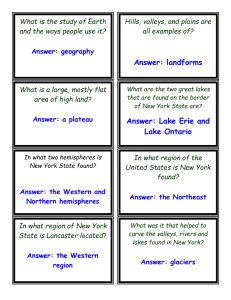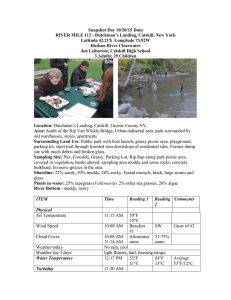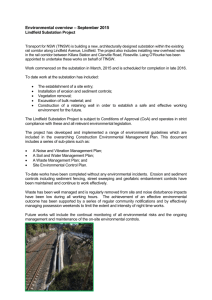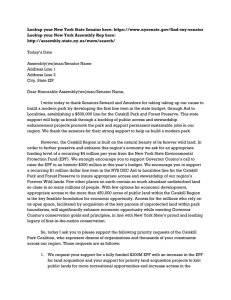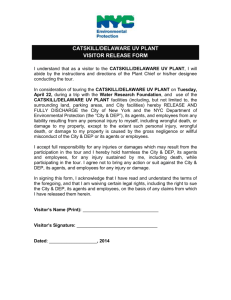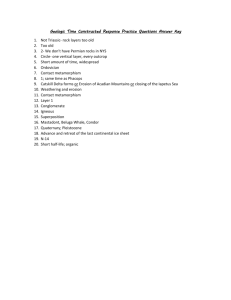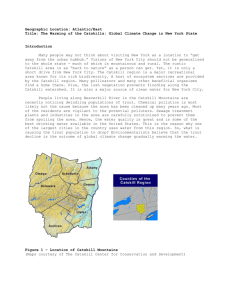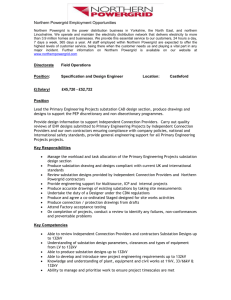Paper Template
advertisement
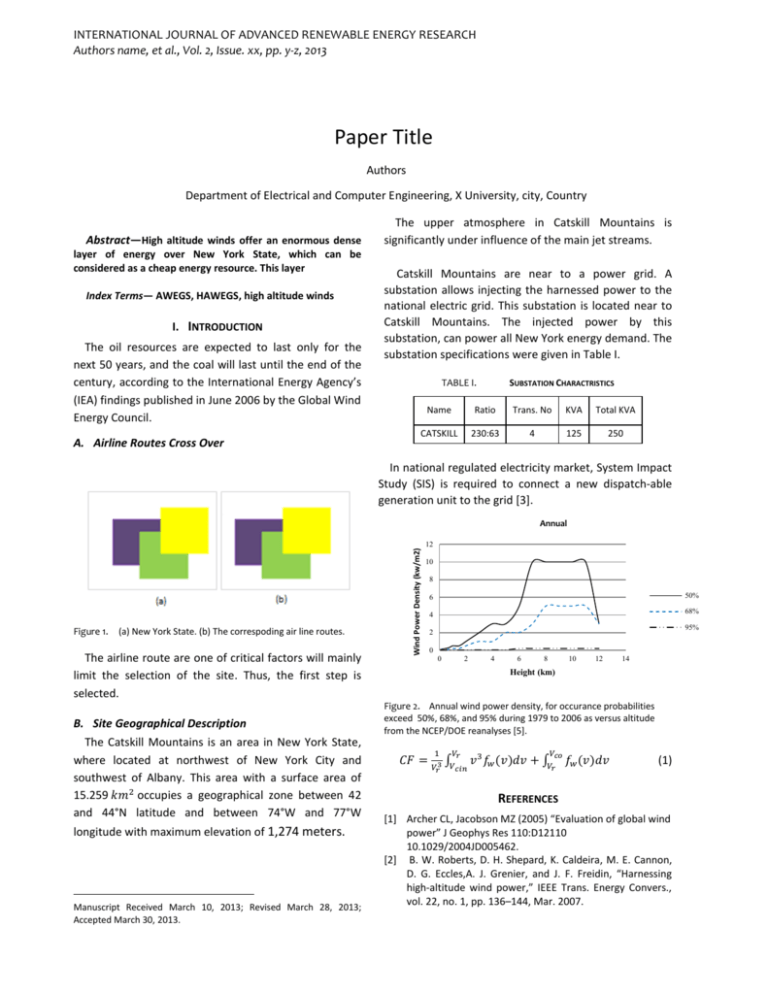
INTERNATIONAL JOURNAL OF ADVANCED RENEWABLE ENERGY RESEARCH Authors name, et al., Vol. 2, Issue. xx, pp. y-z, 2013 Paper Title Authors Department of Electrical and Computer Engineering, X University, city, Country Abstract—High altitude winds offer an enormous dense layer of energy over New York State, which can be considered as a cheap energy resource. This layer Index Terms— AWEGS, HAWEGS, high altitude winds I. INTRODUCTION The oil resources are expected to last only for the next 50 years, and the coal will last until the end of the century, according to the International Energy Agency’s (IEA) findings published in June 2006 by the Global Wind Energy Council. A. Airline Routes Cross Over The upper atmosphere in Catskill Mountains is significantly under influence of the main jet streams. Catskill Mountains are near to a power grid. A substation allows injecting the harnessed power to the national electric grid. This substation is located near to Catskill Mountains. The injected power by this substation, can power all New York energy demand. The substation specifications were given in Table I. SUBSTATION CHARACTRISTICS TABLE I. Name Ratio Trans. No KVA Total KVA CATSKILL 230:63 4 125 250 In national regulated electricity market, System Impact Study (SIS) is required to connect a new dispatch-able generation unit to the grid [3]. Figure 1. (a) New York State. (b) The correspoding air line routes. The airline route are one of critical factors will mainly limit the selection of the site. Thus, the first step is selected. B. Site Geographical Description The Catskill Mountains is an area in New York State, where located at northwest of New York City and southwest of Albany. This area with a surface area of 15.259 𝑘𝑚2 occupies a geographical zone between 42 and 44°N latitude and between 74°W and 77°W longitude with maximum elevation of 1,274 meters. Manuscript Received March 10, 2013; Revised March 28, 2013; Accepted March 30, 2013. Wind Power Density (kw/m2) Annual 12 10 8 6 50% 4 68% 95% 2 0 0 2 4 6 8 10 12 14 Height (km) Figure 2. Annual wind power density, for occurance probabilities exceed 50%, 68%, and 95% during 1979 to 2006 as versus altitude from the NCEP/DOE reanalyses [5]. 𝐶𝐹 = 1 𝑉𝑟 ∫ 𝑣 3 𝑓𝑤 (𝑣)𝑑𝑣 𝑉𝑟3 𝑉𝑐𝑖𝑛 𝑉 + ∫𝑉 𝑐𝑜 𝑓𝑤 (𝑣)𝑑𝑣 𝑟 (1) REFERENCES [1] Archer CL, Jacobson MZ (2005) “Evaluation of global wind power” J Geophys Res 110:D12110 10.1029/2004JD005462. [2] B. W. Roberts, D. H. Shepard, K. Caldeira, M. E. Cannon, D. G. Eccles,A. J. Grenier, and J. F. Freidin, “Harnessing high-altitude wind power,” IEEE Trans. Energy Convers., vol. 22, no. 1, pp. 136–144, Mar. 2007. INTERNATIONAL JOURNAL OF ADVANCED RENEWABLE ENERGY RESEARCH Authors name, et al., Vol. 2, Issue. xx, pp. y-z, 2013 [3] Dong, Z. Y., Hill, D. J., “Power Systems Reactive Planning Under Deregulated Electricity”. Proc. IEEE Conf APSCOM Author received the B.Sc. degree in Electrical Engineering with major in Power Electric from the Semnan University, Iran in 2012. He was a teacher assistant in electrical engineering department at the Semnan University. His research interests include high altitude wind and marine current energy generation systems, and electrical machine design. He holds more than 10 patents in the field of renewable energies. 2000, Hong Kong, 2000, p. 70-5.
